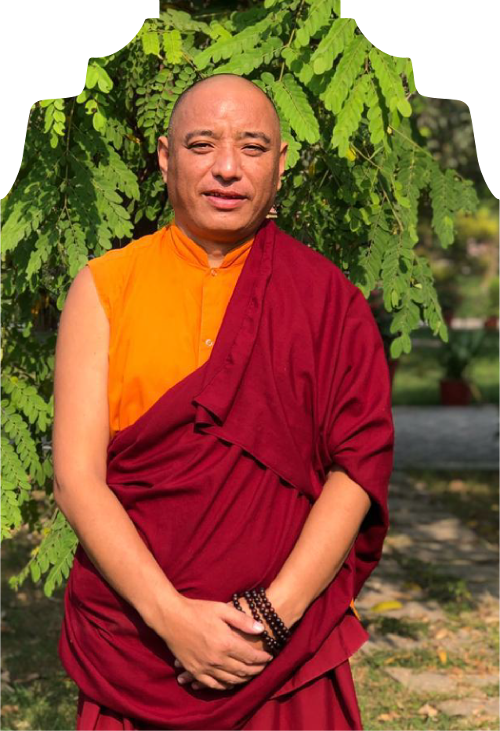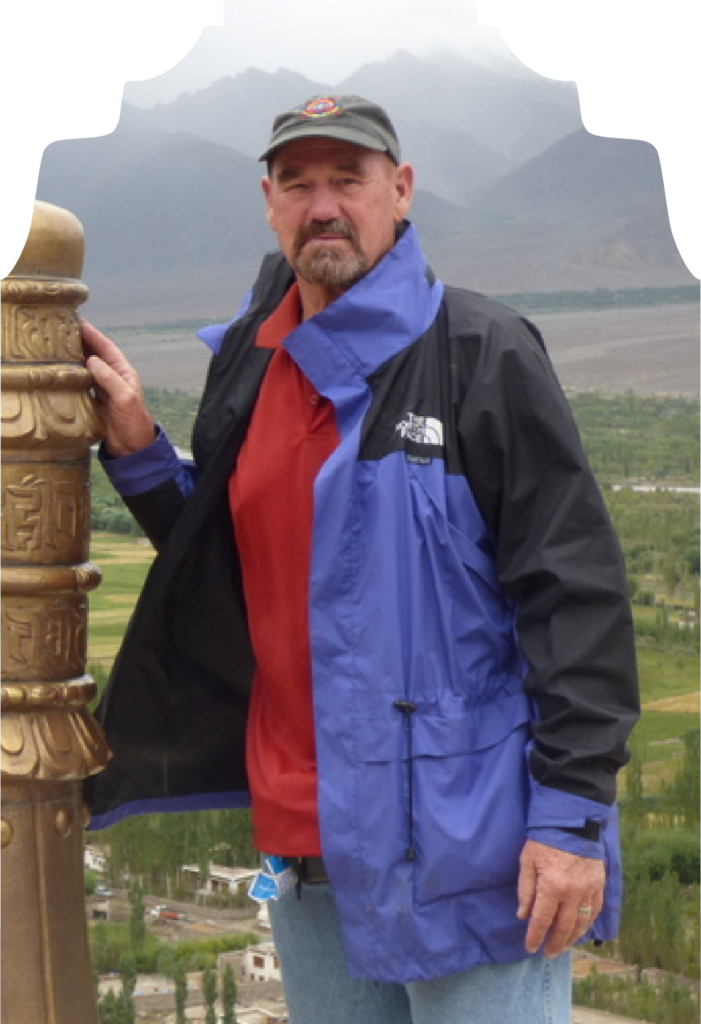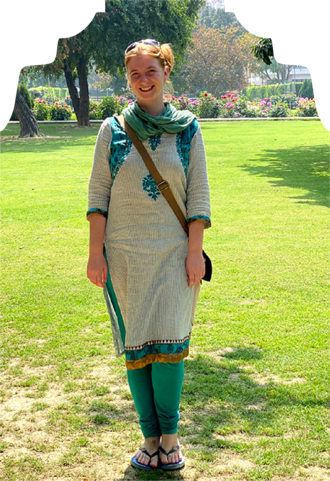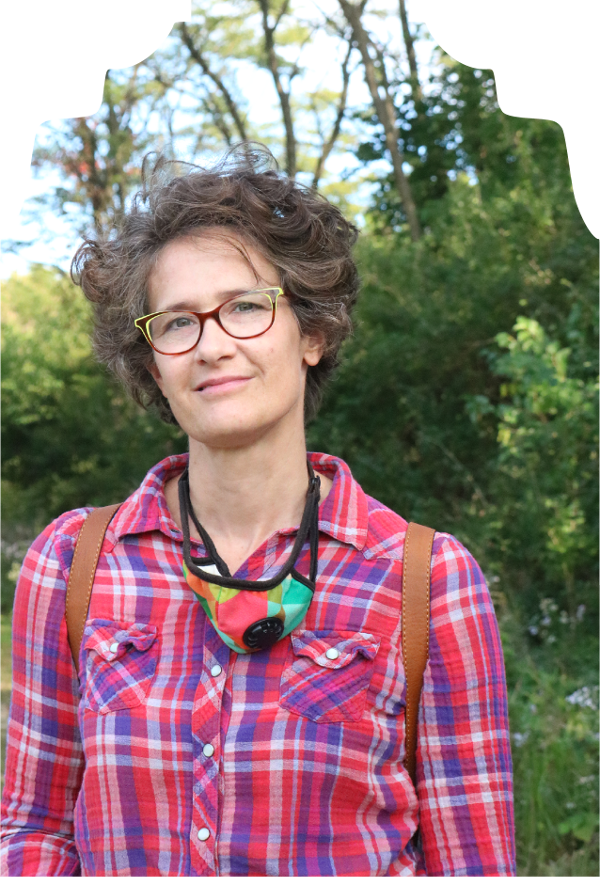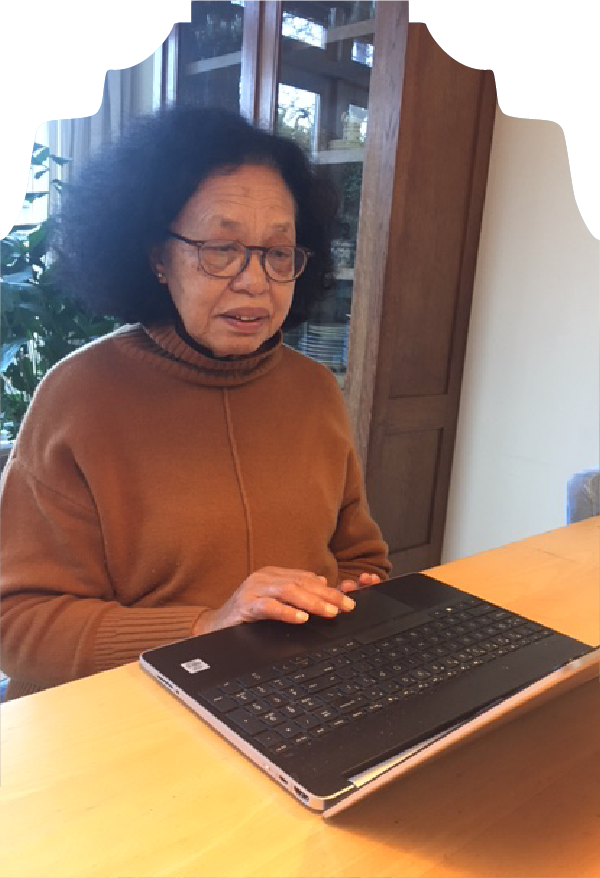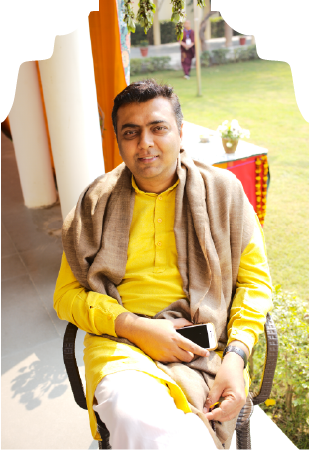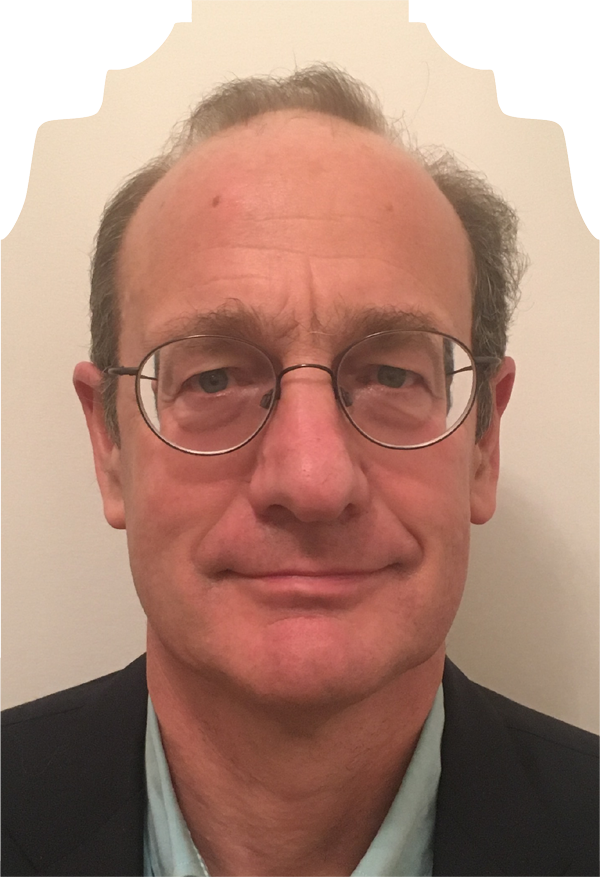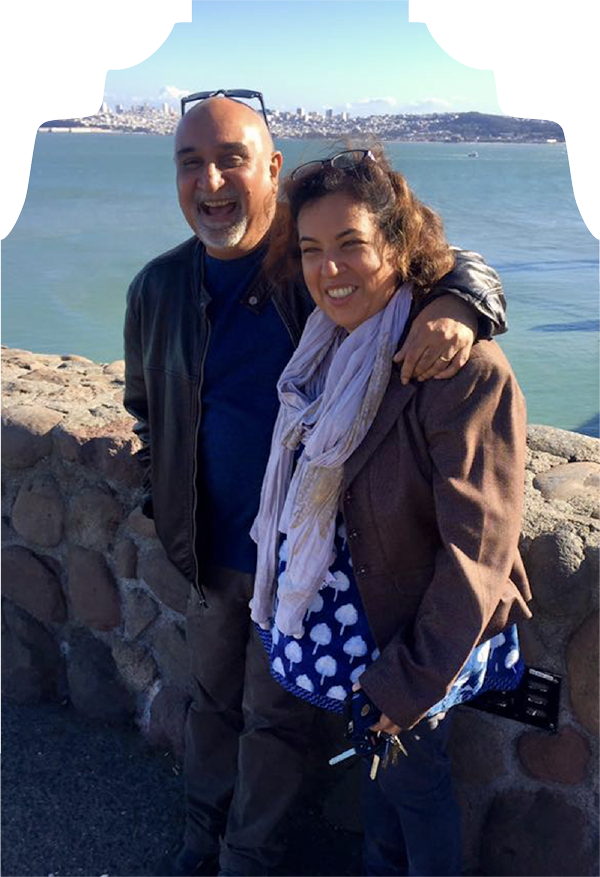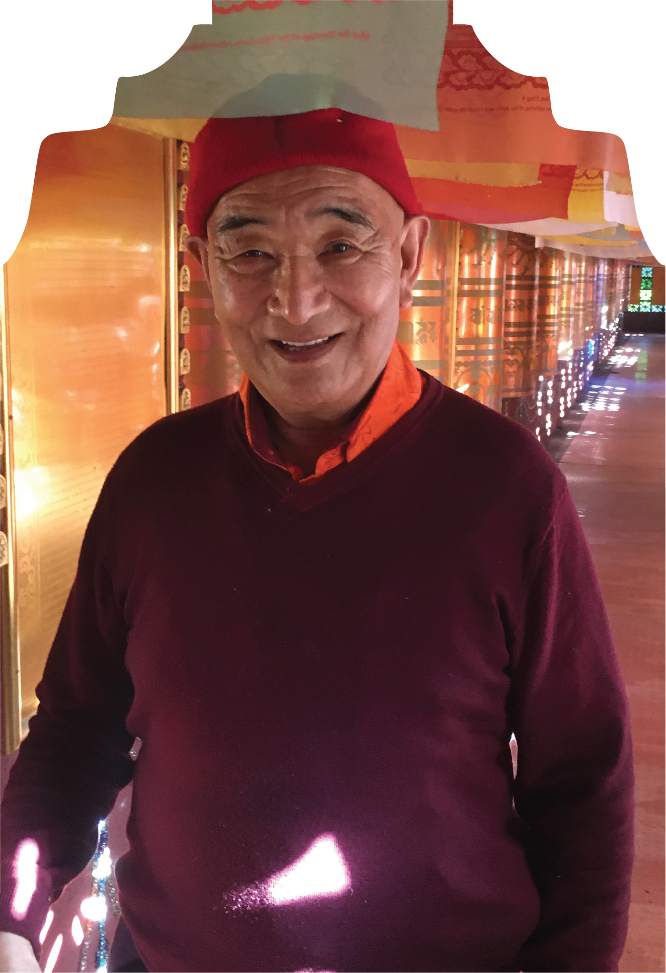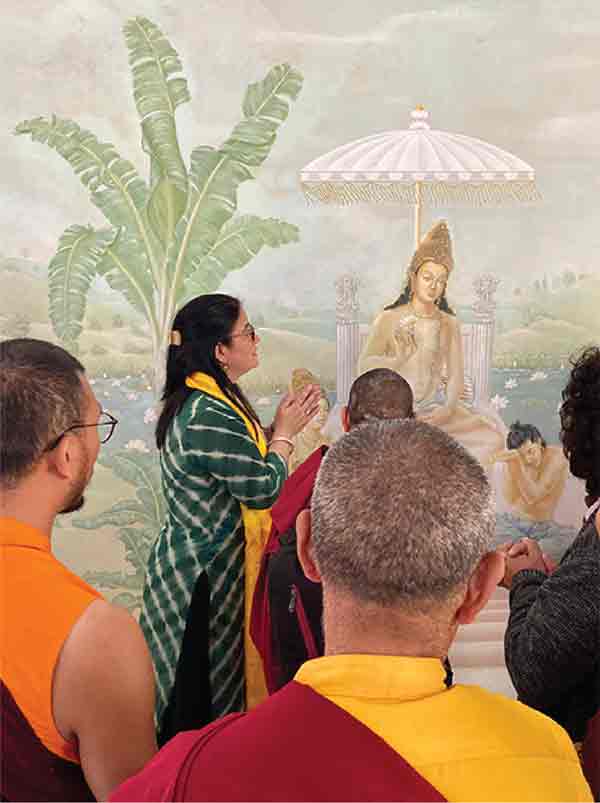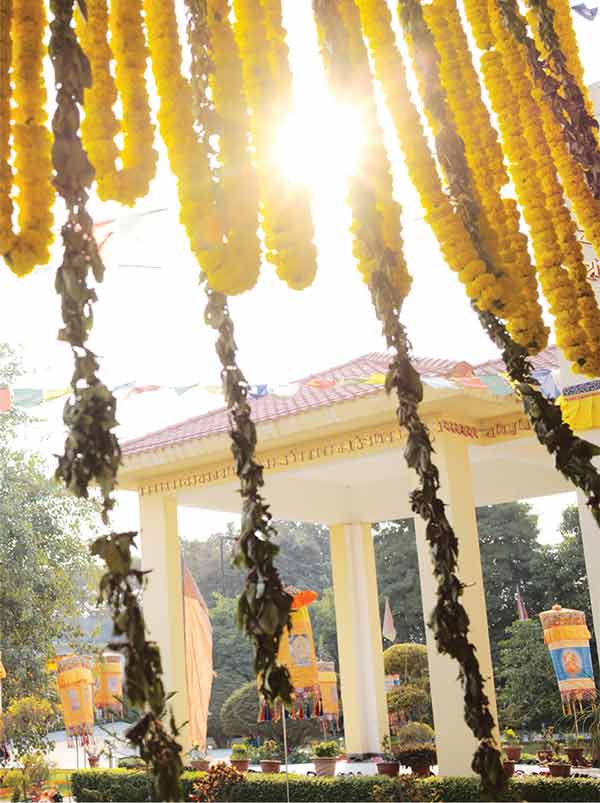The Sarnath International Nyingma Institute was founded by Tarthang Tulku Rinpoche. Rinpoche was born in Golok, Eastern Tibet, in 1935. He is one of the last surviving Tibetan lamas to receive a comprehensive traditional education in Old Tibet. Rinpoche studied with over forty Tibetan Buddhist masters, including Jamyang Khyentse Chokyi Lodro, Adzom Gyalse Gyurme Dorje, Zhechen Kongtrul, Bodpa Tulku, and Tarthang Chogtrul, all considered amongst the greatest Buddhist luminaries of the twentieth century. Rinpoche has dedicated his life to the work of preserving, protecting, and distributing the Tibetan Buddhist heritage.
After leaving Tibet in 1958, Tarthang Tulku taught from 1962 to 1968 at Sanskrit University in Varanasi, India, where he also established one of the first printing presses to print sacred Tibetan texts. In 1969, Tarthang Tulku became the first lama of the Nyingma lineage to settle in the United States. Rinpoche has written over 34 books that have been translated into various Western languages and adopted for class use by universities around the world. Among his many unique accomplishments, Tarthang Tulku is the founder of the Odiyan Buddhist Retreat Center and the Nyingma Monlam Chenmo World Peace Ceremony held annually at Bodh Gaya, India, where, since 1989, he has freely distributed more than six million sacred texts to lamas, monks, and nuns of the Tibetan community. This unprecedented free distribution of Dharma texts has helped to catalyze the development of over 3000 libraries, large and small, throughout the Himalayas.
All his books and projects are efforts to manifest the sacred forms of Kaya, Vaca, Citta, Guna, and Karma—enlightened embodiment, speech, mind, qualities, and actions—for the sake of the entire world. Now in his mid-eighties, Rinpoche continues to preserve and distribute sacred Tibetan texts, to write books for Western audiences, and to energetically direct large, innovative, and inspiring Dharma projects.
As a young tulku, Rinpoche studied intensively with more than forty celebrated masters, traveling widely throughout Eastern Tibet. His root guru was Jamyang Khyentse Chokyi Lodro, one of the most remarkable Tibetan masters of the twentieth century. In 1958, Tarthang Tulku followed this master on a journey to Sikkim, just escaping the annexation of his country by the Chinese. At the young age of 23, he became a refugee in India.
After a short stay at the Young Lamas Home School in Dalhousie, he was asked by H.H. Dudjom Rinpoche to represent the Nyingma School at Sanskrit University in Varanasi. There he established Dharma Mudranalaya to print Tibetan Buddhist texts. In 1968 he left India for the United States, becoming the first Nyingma lama in America. In 1969, Rinpoche founded the Tibetan Nyingma Meditation Center (TMMC), a California corporation sole, as the nucleus of his activities. He established Padma Ling as the residential headquarters of TNMC, and in 1972-73 founded the Nyingma Institute, where he taught publicly until 1978. During these years, he published the first of his nearly three dozen original books in English. He also founded the Tibetan Aid Project to support Tibetans in exile; Dharma Press and Dharma Publishing, which have now printed and produced hundreds of art reproductions and more than 230 books in Western languages; Nyingma Centers, to guide the growth of four international centers, in Amsterdam, Köln, São Paulo and Rio de Janeiro, with a new center, as of 2020, emerging in Porto Allegre; and Odiyan Retreat Center, a mandala of temples, stupas, and libraries, including Vajra Temple, Cintamani Temple, the Enlightenment Stupa, and Vairocana Garden. Consecrated in 2019, Odiyan’s Dharma Wheel Mandala surrounds the Mandala’s central temple complex with 2,016 18-inch-tall Prayer Wheels, each of which contains the entire Tibetan Buddhist Canon; it is the largest monument of its kind in the world. Ratna Ling Retreat Center, established in 2004 as an adjunct to Odiyan, offers retreats to the general public on topics that encourage the integration of mind and body and emphasize many forms of wellness. A special facility to house and support elder members of the TNMC community is in development.
In 1981, Rinpoche published the Nyingma Edition of the Tibetan Buddhist Canon in 120 atlas-sized volumes, followed by an eight-volume Catalogue and Bibliography. The Yeshe De Text Project, founded in 1983, produced Great Treasures of Ancient Teachings in 641 volumes, and has printed and distributed to the Tibetan community an enormous treasure of sacred books, including six editions of the Kanjur and three of the Tanjur. Its most recent edition, the Yid Bzhin Norbu Kanjur, may be the most comprehensive Kanjur collection ever assembled. In all, more than 10,000 sets of the Kanjur have been offered to the Tibetan Sangha.
A Life Devoted to Dharma Activity
In 1989 Rinpoche founded the Nyingma Monlam Chenmo (World Peace Ceremony) in Bodh Gaya, India, where 8,000-10,000 monastics and lay faithful gather annually. He also provided seed money to the other major schools of Tibetan Buddhism for Kagyu, Sakya, and Gelug Monlams.
Through the Monlam, Rinpoche was able to make extraordinary text offerings to the Sangha. Yeshe De’s recent offerings include collected works of great masters like Jigme Lingpa, Patrul Rinpoche and Lama Mipham. As many as 100 unique volumes of texts can be offered in a given year, with thousands of copies of each volume being provided free of charge to the libraries of Dharma centers throughout the Tibetan diaspora. A participant who received books every year of the Monlam would now have a personal Yeshe De library consisting of more than a thousand volumes. Since 1989, along with more than 5 million sacred books, TNMC has distributed 3.25 million sacred art images and 176,250 prayer wheels to more than 3,300 Dharma centers in India, Nepal, Bhutan, and Tibet. Thousands of bronze reproductions of authentic ancient sacred images created at Odiyan have also been offered to the Sangha. A total of 67,285 copies of the precious 8,000-line Prajnaparamita—including 414 granite plaques engraved in Sanskrit, Tibetan, and English, 100 large hand-sewn victory banners, and six important editions in traditional Tibetan format—have been offered to the Sangha.
Other offerings for Bodh Gaya include eight butterlamp houses; hundreds of prayer wheels; golden lhantsa and Tibetan Prajnaparamita plaques; financial support for the restoration of the Mahabodhi Temple spire; site beautification; fabric banners, hangings, and umbrellas produced at Odiyan; and year-round offerings of butterlamps. In 2002, to support the restoration of Buddhism in the land of its origin, Rinpoche founded the Light of Buddhadharma Foundation International (LBDFI). In 2006, TNMC and LBDFI jointly sponsored and organized the first annual Tipitaka Chanting Ceremony by the Theravadin Sangha in Bodh Gaya—the first gathering of its kind in more than 700 years.
As this annual ceremony continues to be held, additional Tipitaka Chanting Ceremonies are being organized and held around the world, including Berkeley, CA; representatives from 11 countries now participate. LBDFI’s work has been embraced by the Indian government, which enthusiastically supports initiatives like the Dharma Training Wheel, bringing venerable monks on an extended pilgrimage to the Eight Great Holy Places of the Buddha.
TNMC and its mandala organizations have installed seventeen 2½-ton World Peace Bells at holy places throughout Asia, and have supported
renovation projects at numerous sacred sites, including the historic renovation of the Swayambhu Stupa in Nepal. Other major restoration projects include the refounding of the practice center of the great twentieth century renunciate master Khenpo Chokyab, and the restoration of Adzom Gar, the seat of Adzom Drukpa and Rinpoche’s own teacher, Adzom Drukpa’s son and heir A-’gyur Rinpoche.
In 2005, Mangalam Light Foundation was established. Operating through four foundations, with LBDFI being joined by the Ananda, Prajna, and Vajra Light Foundations, Mangalam Light's mission is to revive, preserve, and support the heritage of the Buddhadharma in Tibet. The Tibet-based Light Foundations have given substantial support to many diverse projects, including construction at Tarthang Monastery in Eastern Tibet. Ananda Light Foundation is directed by SINI’s director, Tsering Gellek, and has funded repairs and construction at numerous monasteries and nunneries; it has also built primary schools serving 800 children throughout Eastern Tibet. Vajra Light Foundation has provided ceremony support throughout Central and Eastern Tibet, particularly sponsoring large Monlams at Larung Gar and Yachen Gar, respectively the largest Buddhist monastery in the world and the largest nunnery in Tibet. Prajna Light Foundation has made great efforts to restore Tibetan libraries: more than 1,000 sets of the Kanjur and 10,000 sets of the collected works of the great Nyingma master Longchenpa have been distributed to monasteries throughout Tibet.
In 2009, Rinpoche founded the Mangalam Research Center for Buddhist Languages in Berkeley, CA. Partnering with a distinguished group of international scholars, MRC has received several prestigious grants from the National Endowment for the Humanities, enabling it to develop the highly innovative Buddhist Translators’ Workbench data tool for researchers. It also offers many conferences, colloquia and seminars, as well as numerous programs open to the public. In the same period, Rinpoche founded Guna Foundation, a documentary filmmaking unit that has produced three well-received documentaries on Tarthang Tulku’s Dharma activities, including the award-winning film, The Great Transmission (2016).
In 2012, Rinpoche established Dharma College in downtown Berkeley to serve as a site for the exploration of dynamic and synergistic new teachings on the nature of the mind, expressed in recent books like Revelations of Mind, Dimensions of Mind, Keys of Knowledge, and the Lotus Trilogy. 2013 saw the inauguration of Sarnath International Nyingma Institute (SINI) in Sarnath, India, founded by Rinpoche in order to bridge the gap between Eastern and Western modes of knowledge, to foster the study of the earliest period of Tibetan Buddhism (embodied in Khen Lob Cho Sum, the Founders of Tibetan Dharma), and to host the annual Tibet Peace Ceremony. SINI is also home to the ecumenical Kanjur Karchag Project, which gathers Tibetan scholars from all major schools in a deep study of the origins and structure of the Tibetan Kanjur. As the TNMC mandala continues to unfold, the Nyingma Association of Mandala Organizations (NAMO), incorporated in 2012, helps guide and protect the work of its seventeen distinct member organizations.
In 2018, Rinpoche published Caring, an accessible exploration of the power of compassion in healing ourselves and the world around us. New programs based on Caring are being offered throughout the TNMC mandala. As of 2020, online programs for the public on a wide variety of topics are available from the Nyingma Institute, Dharma College, Ratna Ling, Odiyan, and the international centers.


